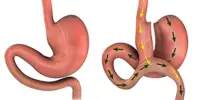There is evidence to suggest that reproductive factors in women can contribute to the risk of cardiovascular disease (CVD). Several studies have found that women who experience certain reproductive events, such as early menarche (the onset of menstruation), late menopause, or pregnancy complications such as preeclampsia, gestational diabetes, or preterm delivery, have an increased risk of CVD.
According to new research, an earlier first birth, a higher number of live births, and starting periods at a younger age are all linked to a higher risk of cardiovascular problems in women. The Imperial College London study provides evidence for a causal relationship between sex-specific factors and cardiovascular disease in women, as well as potential ways to mitigate this increased risk.
The study is the most comprehensive examination to date of female reproductive factors and their links to a variety of cardiovascular diseases, including atrial fibrillation (irregular heart rate), coronary heart disease, heart failure, and stroke. The researchers hope that it will help doctors better understand and monitor women’s risk factors, allowing them to intervene when necessary.
Researchers from Imperial’s National Heart & Lung Institute, University of Cambridge and Yale School of Public Health analysed genetic data linked to women’s age at first birth, their number of live births, their age at their first period (menarche), and their age at menopause. They looked at previous studies involving more than 100,000 women.
Our findings show that if traditional risk factors like BMI and blood pressure are well-controlled, the additional risk of cardiovascular disease can be reduced. These findings emphasize the importance of doctors closely monitoring these risk factors in women and intervening as needed.
Dr. Maddalena Ardissino
Observational research has previously identified some reproductive factors as being associated with cardiovascular disease in later life for women, but such studies are limited because they have not supported a causal relationship.
The researchers were able to demonstrate a link between the genes that predict reproductive factors and the risk of multiple cardiovascular diseases by using a statistical technique known as Mendelian Randomization. This type of analysis allows researchers to cut through the noise of factors like diet, economic background, and physical activity levels that can otherwise complicate the overall picture, pointing to causal links.
An earlier first birth, a higher number of live births, and an earlier menarche were found to be associated with an increased risk of atrial fibrillation, coronary artery disease, heart failure, and stroke in women. It did not, however, discover a link between menopause age and cardiovascular disease.
The researchers also discovered that a large portion of the increased risk for earlier menarche was due to this factor being associated with women having a higher BMI (BMI). This means that lowering a person’s BMI may aid in lowering this risk. The increased risk of having a first child at a younger age could be mitigated in part by addressing traditional cardiometabolic risk factors such as BMI, high cholesterol, and high blood pressure.

Dr Maddalena Ardissino, lead author of the study, from the National Heart and Lung Institute at Imperial College London, said: “Women are often mischaracterised as being at low risk for cardiovascular disease, leading to delays in diagnosis. Even when they are diagnosed, they tend to receive less targeted treatment than men.”
“This study demonstrates an unmistakable link between reproductive factors and cardiovascular disease. This is not to say that women should be concerned if they had their period at a young age or had their first child at a young age. Our findings show that if traditional risk factors like BMI and blood pressure are well-controlled, the additional risk of cardiovascular disease can be reduced. These findings emphasize the importance of doctors closely monitoring these risk factors in women and intervening as needed.”
“Many previous studies on cardiovascular disease have focused on men, but our research shows that there are sex-specific factors that influence the risk for women,” said Dr Fu Siong Ng of the National Heart and Lung Institute at Imperial College London. While we cannot say how much these factors increase the risk of cardiovascular disease, our research shows that reproductive history is important and may have a causal impact. We need to learn more about these factors to ensure that women receive the best possible care.”
Further research is needed to understand the extent of the relationship between reproductive factors and cardiovascular disease risk, such as whether there is a linear or non-linear relationship between a factor and increased risk.
Cardiovascular disease has long been thought to be a man’s disease, as men are more likely than women to develop it at a younger age. This group of diseases, however, is a serious issue for women.
According to British Heart Foundation research, coronary heart disease kills more than twice as many women in the UK as breast cancer each year, with over 800,000 women living with the disease. It is also estimated that approximately 380,000 women alive today in the UK have survived a heart attack.
Dr. Sonya Babu-Narayan, Associate Medical Director at the British Heart Foundation and consultant cardiologist, said:
“The widespread belief that cardiovascular disease primarily affects men is endangering women’s health and even their lives. It is critical that women are educated on what factors may increase their risk of developing heart disease or stroke in the future. This includes the well-known risks that affect everyone; however, for women, additional risk factors from their reproductive years may be added to the list. If we want to save more women’s lives, we need to make asking about periods and pregnancy a routine part of assessing every woman’s risk of heart disease and stroke.”
















